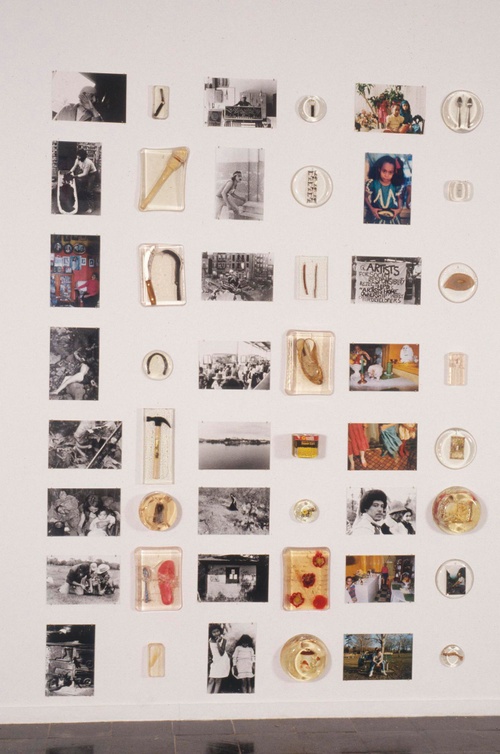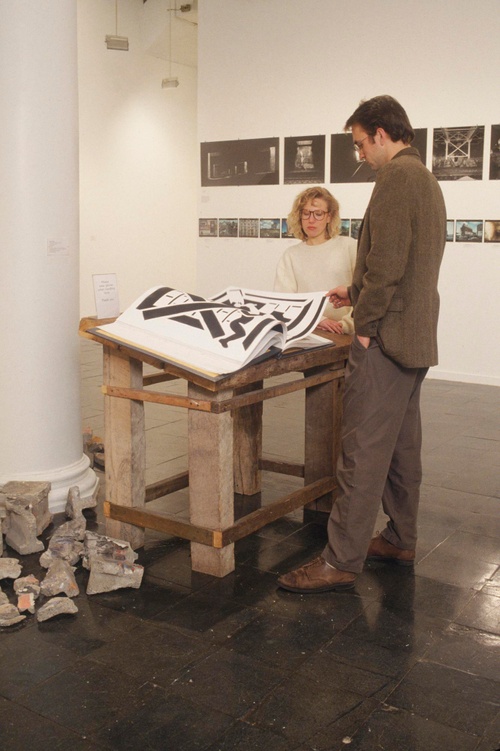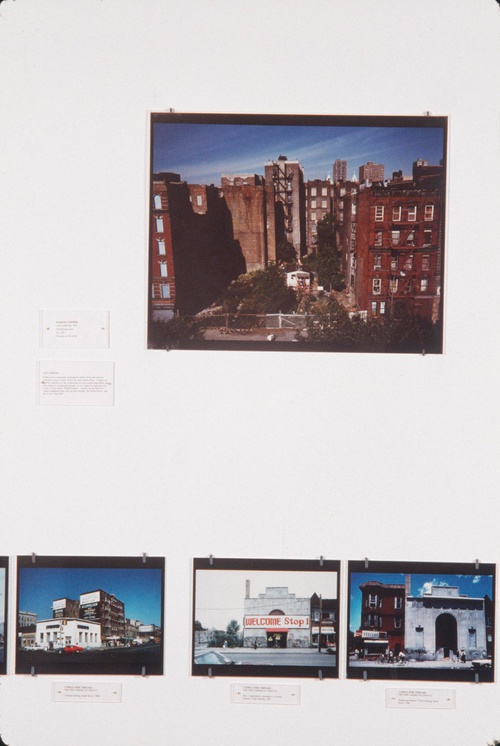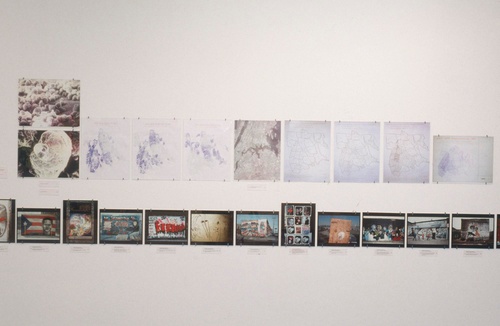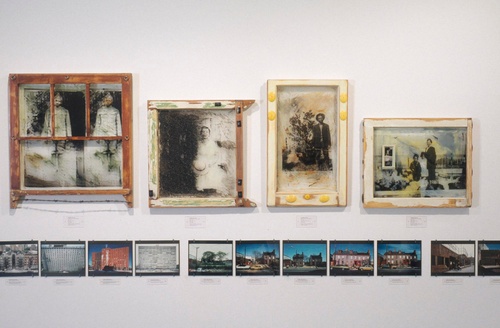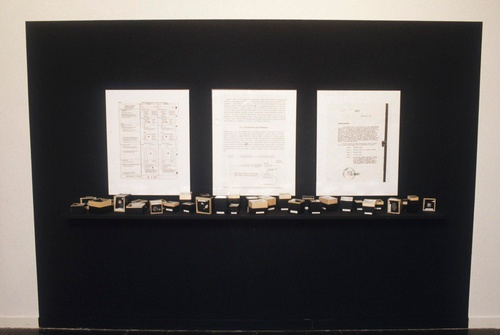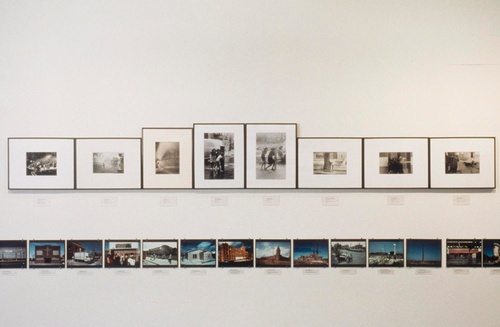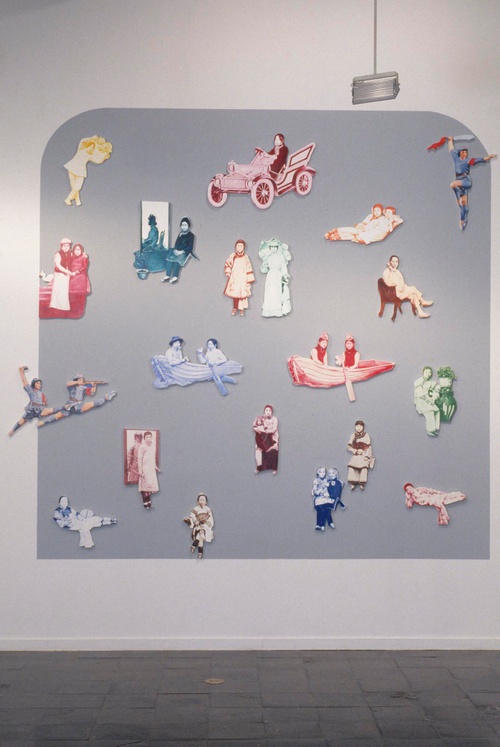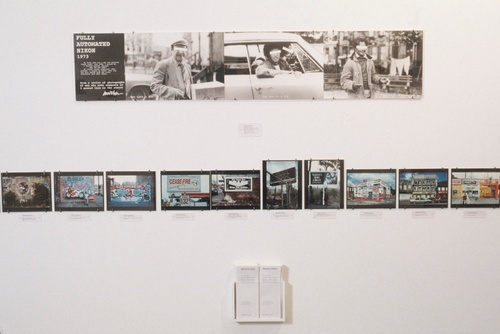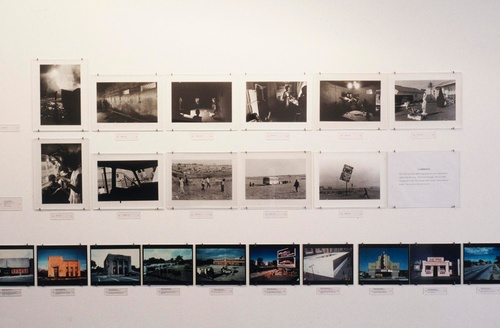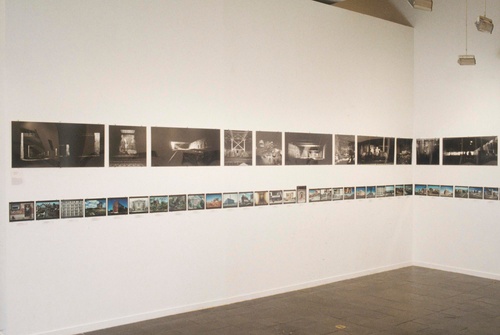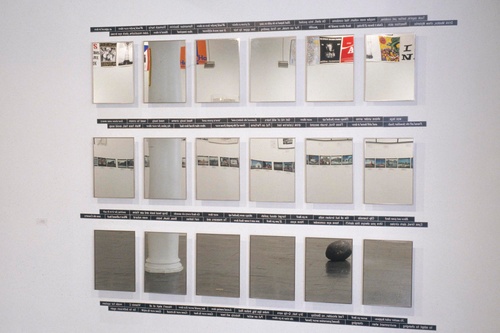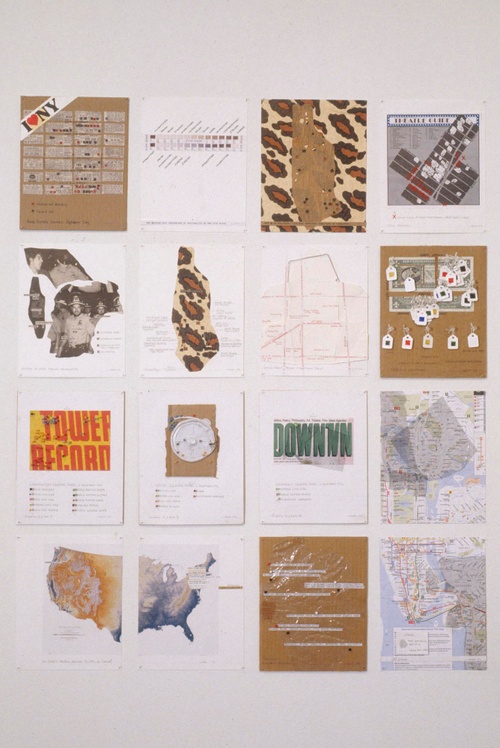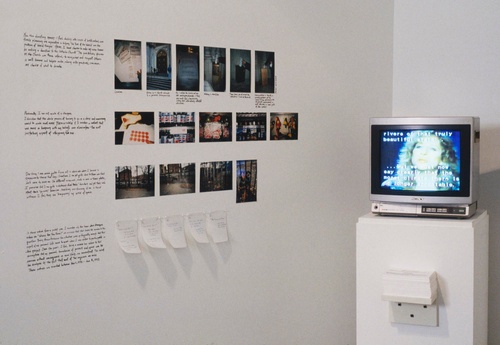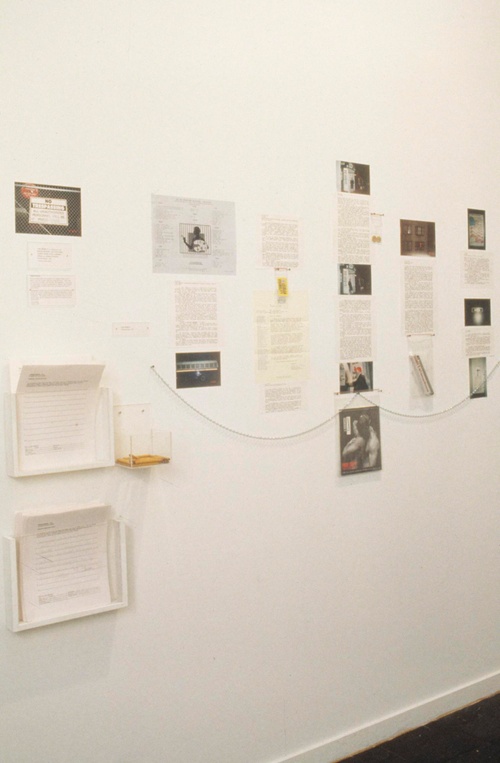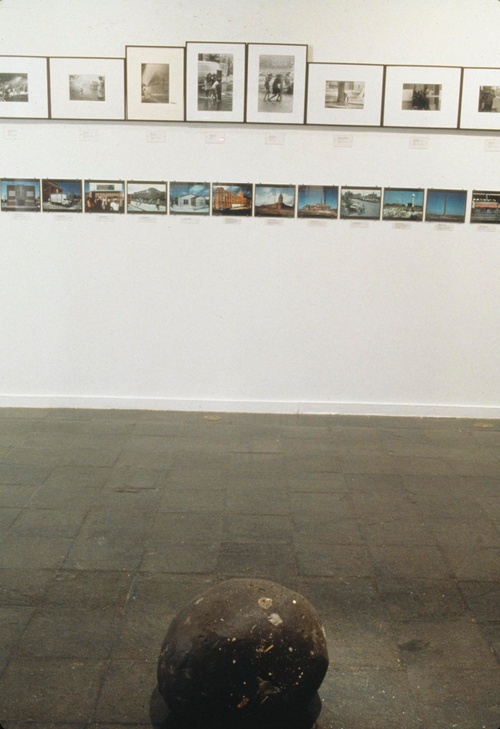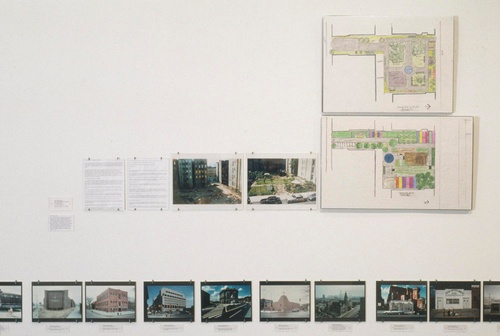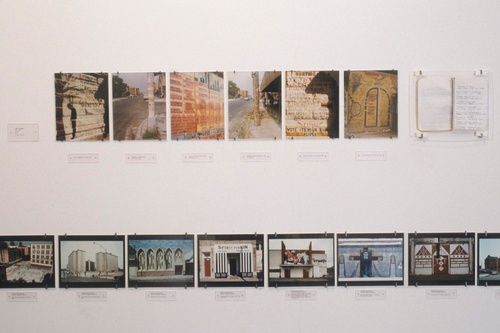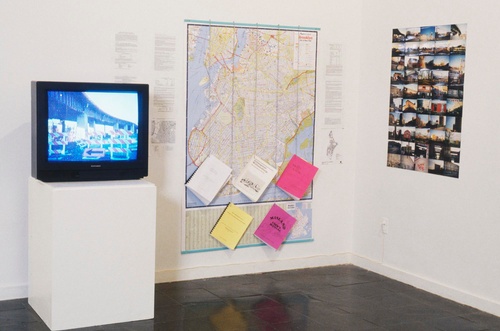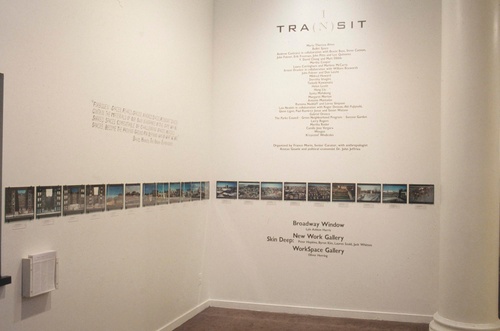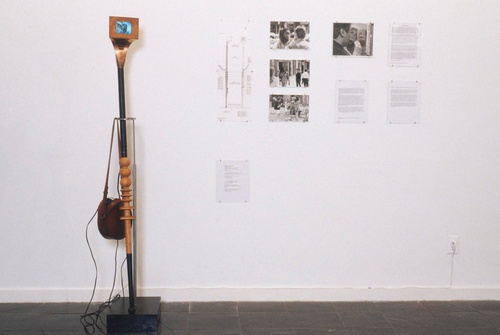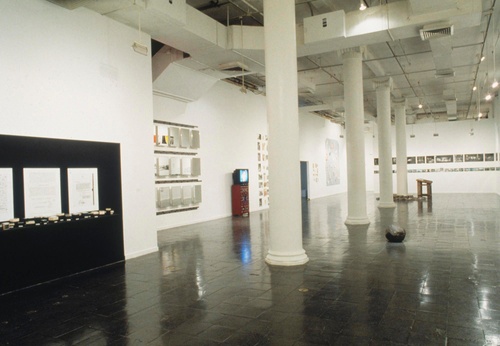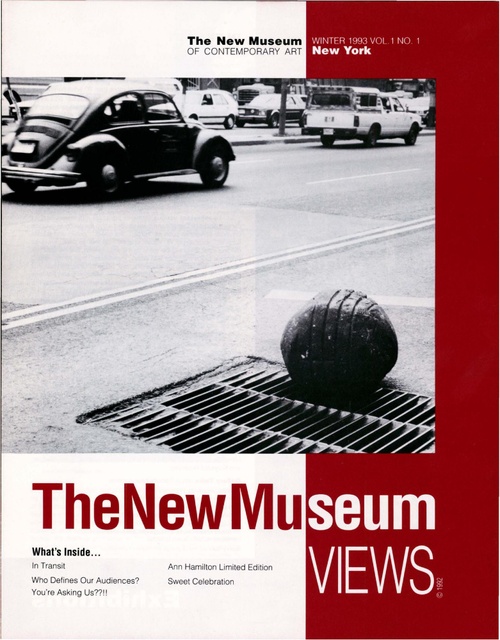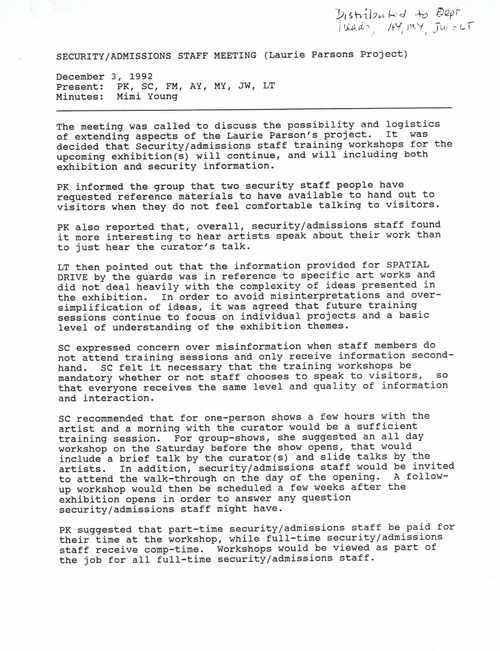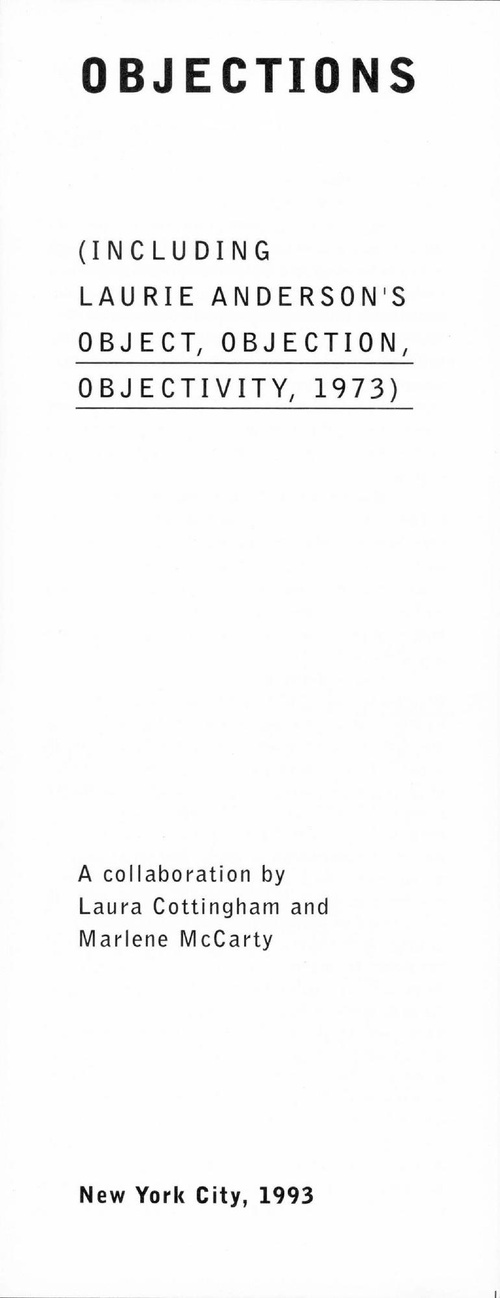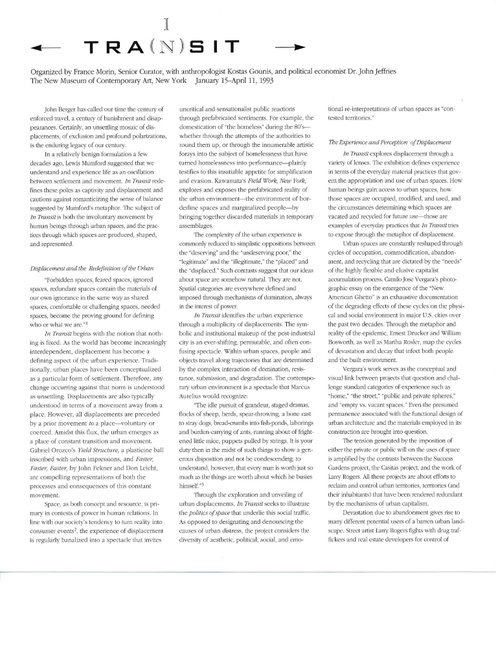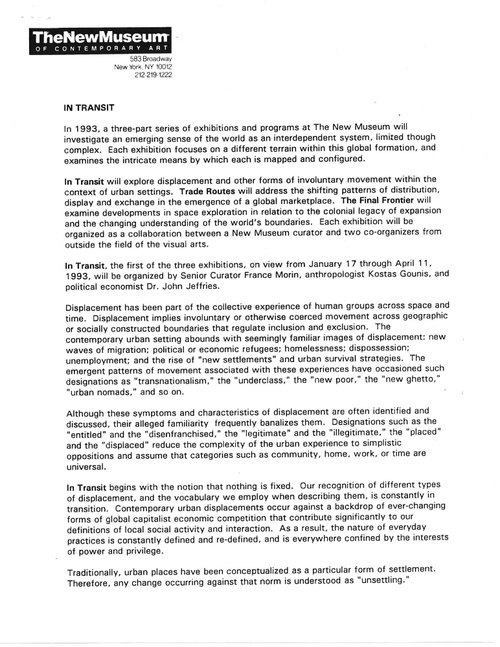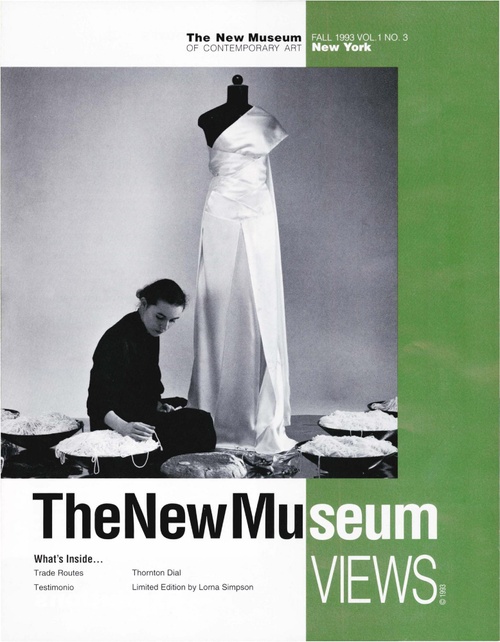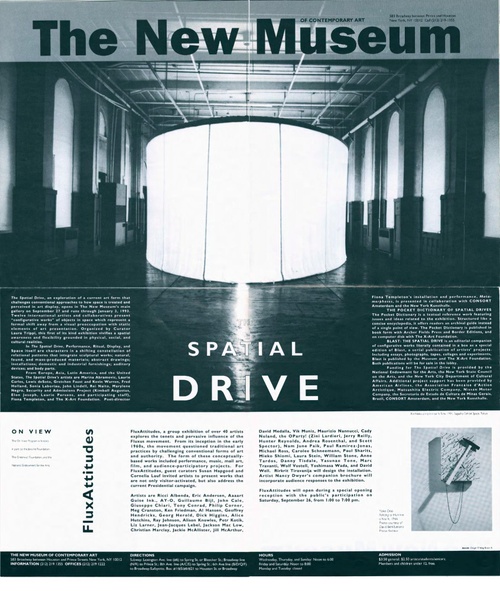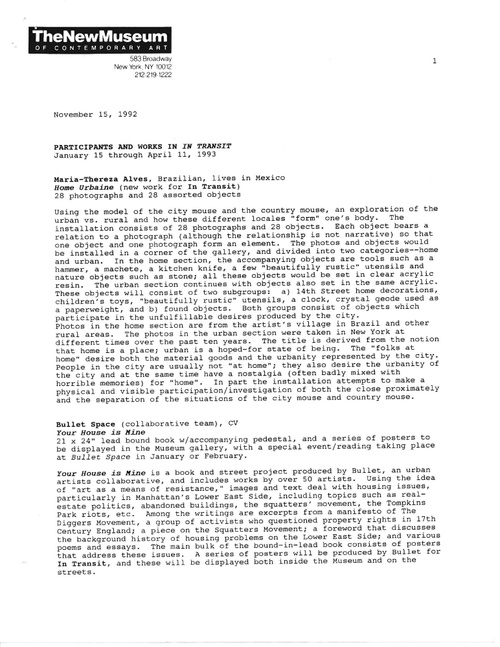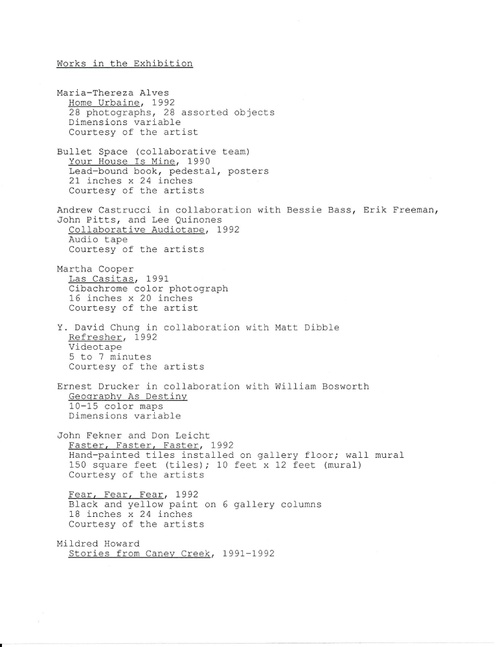In Transit
In Transit
The first in a series of three exhibitions investigating changing borders and boundaries in contemporary culture.
“In a relatively benign formulation a few decades ago, Lewis Mumford suggested that we understand and experience life as an oscillation between settlement and movement. ‘In Transit’ redefines these poles as captivity and displacement and cautions against romanticizing the sense of balance suggested by Mumford’s metaphor. The subject of ‘In Transit’ is both the involuntary movement by human beings through urban spaces, and the practices through which spaces are produced, shaped, and represented.”1
-Kostas Gounis, Dr. John Jeffries, and France Morin, exhibition brochure.
“In Transit explored the involuntary movement of people and objects through different urban spaces, and the representation, production and reconfiguration of the spaces themselves. The exhibit suggested that, in our time, displacement has become a defining aspect of the urban experience.”2
-From The New Museum Annual Report, 1992-1994
“In 1992, a three-part series of exhibitions and programs at The New Museum will invetsigate an emerging sense of the world as an interdependent system, limited though complex. Each exhibition focuses on a different terrain within this global formation, and examines the intricate means by which each is mapped and configured.
[…]
In transit, the first of the three exhibitions, on view from January 17 through April 11, 1993, will be organized by Senior Curator France Morin, anthropologist Kostas Gounis, and poliitcal economist Dr. John Jeffries.
Displacement has been part of the collective experience of human groups across space and time. Displacement implies involuntary or otherwise coerced movement across geographic or socially constructed boundaries that regulate inclusion and exclusion. The contemporary urban setting abounds with seemingly familiar images of displacement: new waves of migration; political or economic refugees; homelessness; dispossession; unemployment; and the rise of "new settlements” and urban survival strategies. The emergent patterns of movement associated with these experiences have occasioned such designations as “transnationalism,” the “underclass,” the “new poor,” the “new ghetto,” “urban nomads,” and so on.
Although these symptoms and characteristics of displacement are often identified and discussed, their alleged familiarity frequently banalizes them. Designations such as the “entitled” and the “disenfrancished,” the “legitimate” and the “illegitimate,” the “placed” and the “displaced” reduce the complexity of the urban experience to simplistic oppositions and assume that categories such as community, home, work, or time are universal.
“In Transit” begins with the notion that nothing is fixed. Our recognition of different types of displacement, and the vocabulary we employ when describing them, is constantly in transition. Contemporary urban displacements occur against a backdrop of ever-changing forms of global capitalist economic competition that contribute significantly to our definitions of local social activity and interaction. As a result, the nature of everyday practices is constantly defined and re-defined, and is everywhere confined by the interests of power and privilege.
Traditionally, urban places have been conceptualized as a particular form of settlement. Therefore, any change occurring against that norm is understood as “unsettling.” Displacements are also typically understood in terms of a movement away from a place. However, all displacements are preceded by a prior movement to a place – voluntary, involuntary, or otherwise. Amidst this flux, the ‘urban’ merges as a place of constant transition and movement.
This project, therefore, identifies the urban experience through a multiplicity of displacements. The symbolic and institutional makeup of the post-industrial city is an ever-shifting, permutable, and often confusing spectacle. Within these urban spaces, people and objects travel along trajectories that are determined by the complex interaction of domination, resistance, submission, and degradation. The forces that direct this traffic are sometimes invisible, sometimes apparent, but always subject to interpretation and representation.
Through the exploration and unveiling of urban displacements, ‘In Transit’ seeks to clarify the politics of space which underlies this social traffic. As opposed to designating and denouncing the causes of urban distress, the project encourages the makers and viewers of the exhibition to consider a diversity of aesthetic, political, social, and emotional re-interpretations of urban spaces as “contested territories.” The exhibition suggests possibilities for viewers to situate themselves in both local and global processes of displacement and to re-examine questions of responsibility for, and participation in, these experiences.
Projects in the exhibition may be the work of artists, architects, or performers. We also encourage the work of urban residents who do not identify with any of these groups. Projects may be situated inside or outside the museum space. They may be designed to last the duration of the exhibition, or they may be ephemeral. They may be constructions, they may be ‘de-constructions.’ They may take the form of imges, objects, or documentation.“3
